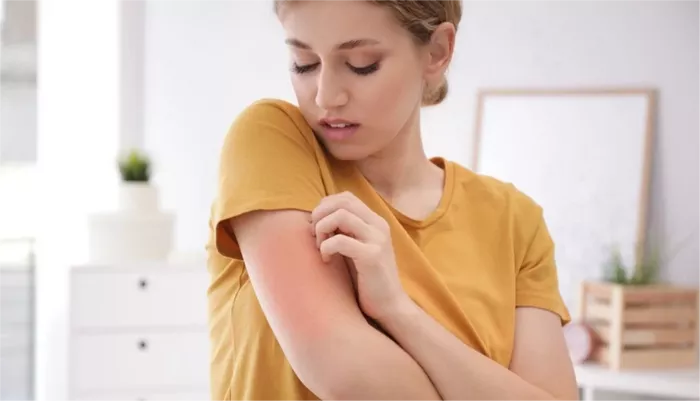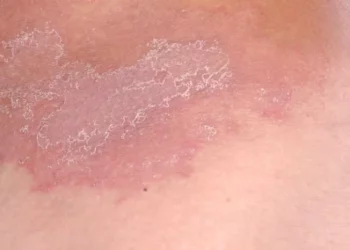Ringworm, despite its misleading name, is not caused by worms but rather by a fungal infection. This common skin condition, also known as dermatophytosis, affects millions of individuals worldwide, causing discomfort and irritation. One of the hallmark symptoms of ringworm is intense itching, often leaving those affected desperate for relief. But why does ringworm itch so much? Unraveling the intricacies of this phenomenon requires delving into the mechanisms of fungal infection, the body’s immune response, and the pathways of itch sensation.
The Fungal Culprit: Tracing the Origins of Ringworm
Ringworm is primarily caused by various species of fungi known as dermatophytes. These fungi thrive in warm, moist environments, making areas such as the skin, nails, and scalp particularly susceptible to infection. The most common dermatophyte species responsible for ringworm include Trichophyton, Microsporum, and Epidermophyton.
Upon contact with the skin, dermatophytes invade the superficial layers, where they feed on keratin, a protein found in the skin, hair, and nails. As these fungi proliferate, they trigger an inflammatory response from the body’s immune system, leading to the characteristic symptoms of ringworm, including redness, swelling, and, notably, itching.
The Itch Sensation: Unraveling the Neurological Pathways
The sensation of itching, known as pruritus, is a complex neurological process involving various sensory nerves, neurotransmitters, and receptors. In the case of ringworm, the itch sensation arises as a result of both direct fungal activity on the skin and the body’s immune response to the infection.
Dermatophytes produce enzymes and proteins that not only facilitate their growth but also elicit a response from the host’s immune system. These fungal components, along with the body’s inflammatory mediators, such as histamine, cytokines, and prostaglandins, stimulate the nerve endings in the skin, triggering the sensation of itchiness.
Furthermore, certain molecules released during the immune response, such as substance P and calcitonin gene-related peptide (CGRP), play a crucial role in amplifying the itch sensation by sensitizing the nerve fibers and promoting neuronal signaling to the brain.
The Immune Response: Fueling the Itch-Scratch Cycle
The body’s immune system serves as a double-edged sword in the battle against ringworm. While it mounts a defense against the invading fungi, its inflammatory response can inadvertently exacerbate the itchiness experienced by the affected individual.
Inflammation is the body’s natural reaction to infection or injury, characterized by increased blood flow to the affected area, swelling, and the recruitment of immune cells. In the case of ringworm, the immune response targets the fungal invaders, releasing a cascade of inflammatory molecules that contribute to the sensation of itchiness.
Moreover, scratching, though providing temporary relief, can further aggravate the condition by damaging the skin barrier and introducing bacteria into the affected area. This sets off a vicious cycle wherein scratching leads to more inflammation and itching, perpetuating the discomfort experienced by the individual.
Treatment Strategies: Breaking the Itch-Scratch Cycle
Effective management of ringworm-associated itching requires a multifaceted approach targeting both the underlying fungal infection and the symptoms of pruritus. Antifungal medications, available in various forms such as creams, lotions, and oral tablets, work to eliminate the causative fungi and alleviate the infection.
Additionally, anti-itch medications, including topical corticosteroids, antihistamines, and soothing emollients, can provide symptomatic relief by reducing inflammation and calming the nerve endings in the skin. It is essential to consult a healthcare professional for appropriate diagnosis and treatment recommendations tailored to the individual’s specific condition and medical history.
Prevention is Key: Minimizing the Risk of Ringworm
Preventing ringworm involves adopting practices that minimize exposure to the causative fungi and maintaining good hygiene habits. Some preventive measures include:
1. Practice good hygiene: Regularly wash your hands and body with soap and water, especially after participating in activities that involve skin-to-skin contact or exposure to potentially contaminated surfaces.
2. Keep skin dry and clean: Fungi thrive in warm, moist environments, so ensure that your skin remains dry and clean, particularly in areas prone to sweating.
3. Avoid sharing personal items: Refrain from sharing clothing, towels, hairbrushes, and other personal items with individuals who may have ringworm or other fungal infections.
4. Wear protective clothing: In environments where the risk of fungal exposure is high, such as gyms, swimming pools, and communal showers, wear appropriate protective clothing, such as sandals or shower shoes, to minimize skin contact.
By incorporating these preventive measures into your daily routine, you can significantly reduce the risk of contracting ringworm and experiencing the associated itching and discomfort.
Conclusion
The intense itching associated with ringworm is a result of the complex interplay between fungal activity, the body’s immune response, and neurological pathways involved in itch sensation. Understanding the mechanisms underlying this phenomenon is crucial for developing effective treatment strategies that target both the underlying infection and the symptoms of pruritus.
By addressing the root cause of ringworm through antifungal medications and adopting preventive measures to minimize exposure to fungi, individuals can alleviate itching and discomfort while promoting healing and recovery. Through continued research and innovation in dermatology, we can strive to enhance our understanding of ringworm and improve the quality of life for those affected by this common fungal infection.
























